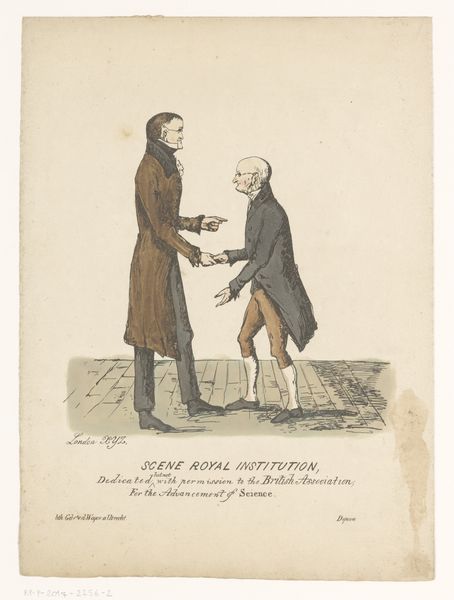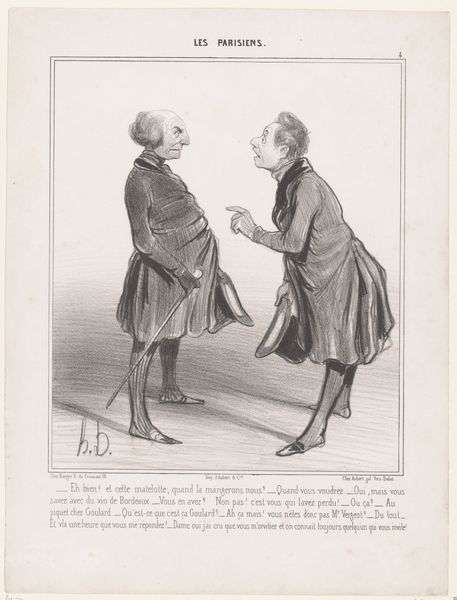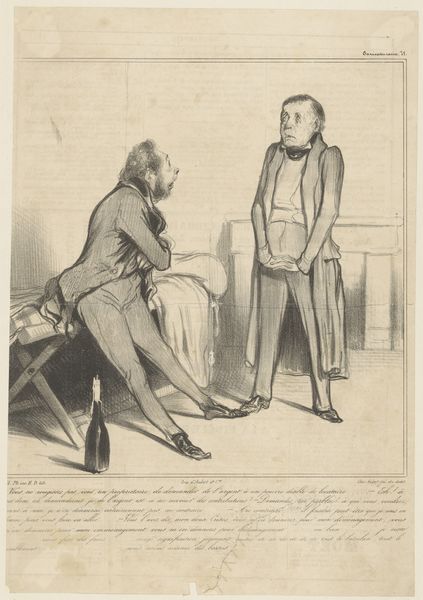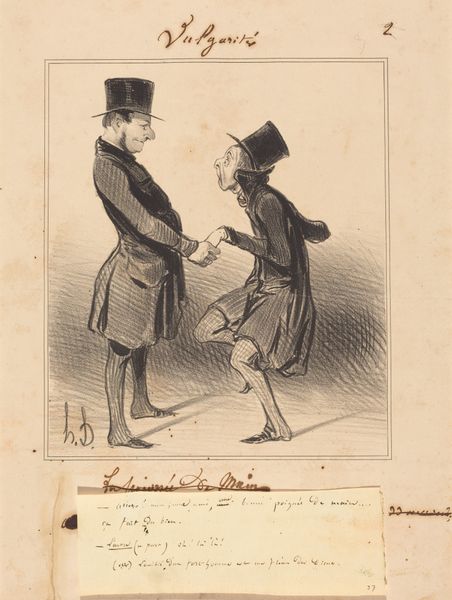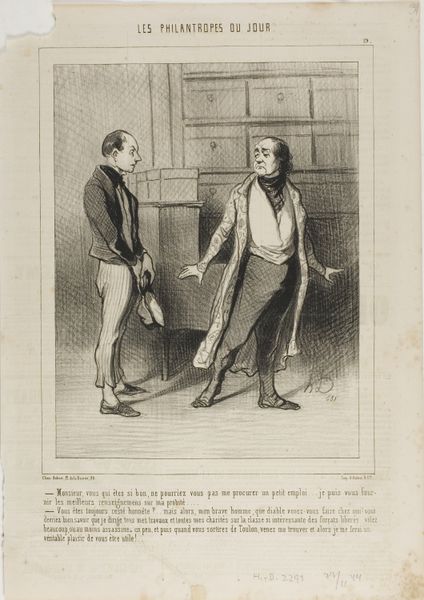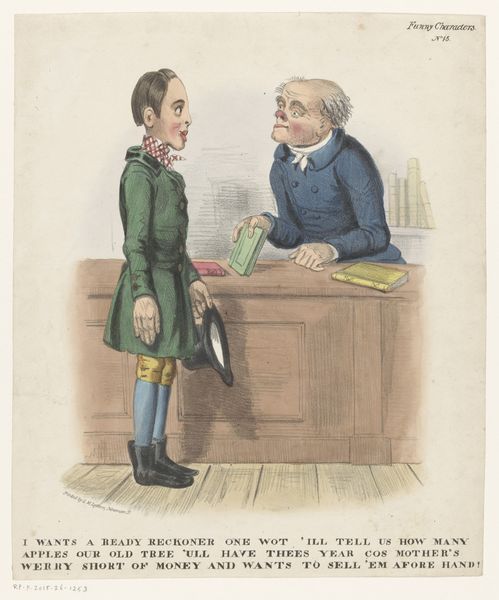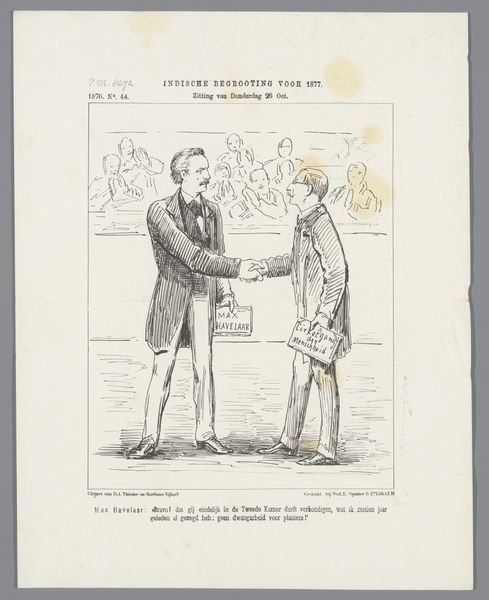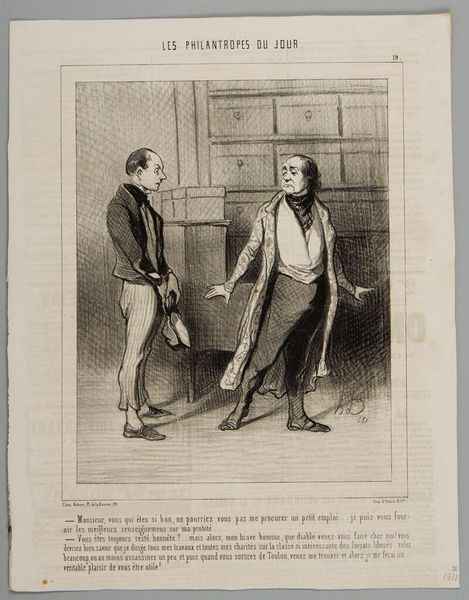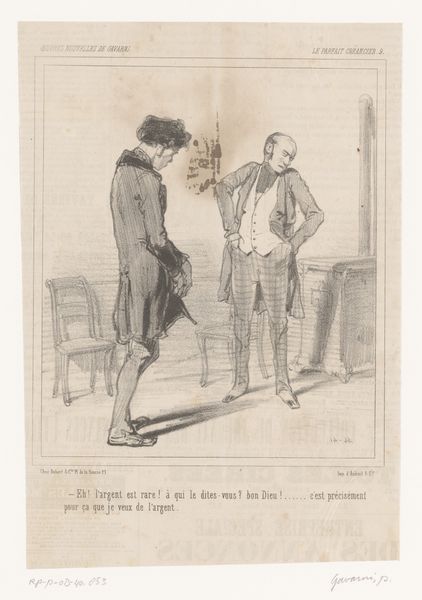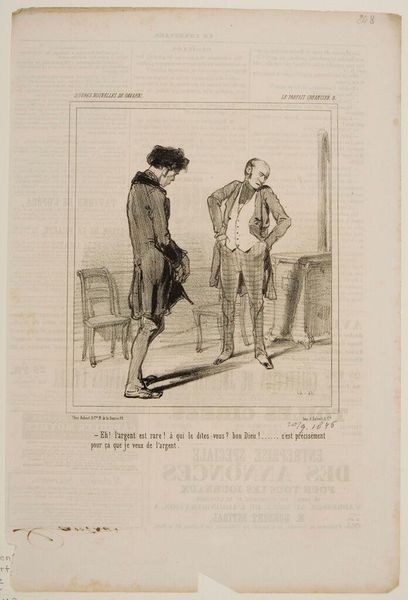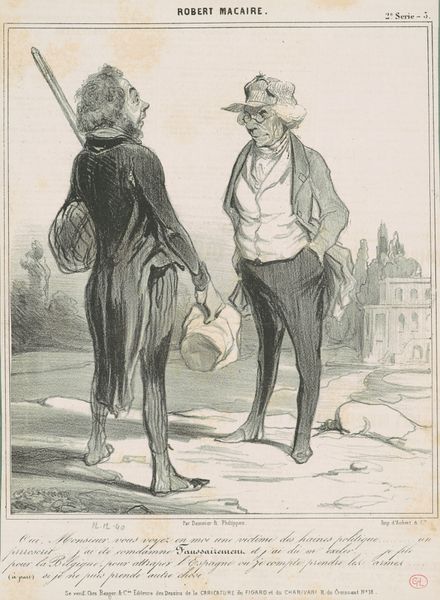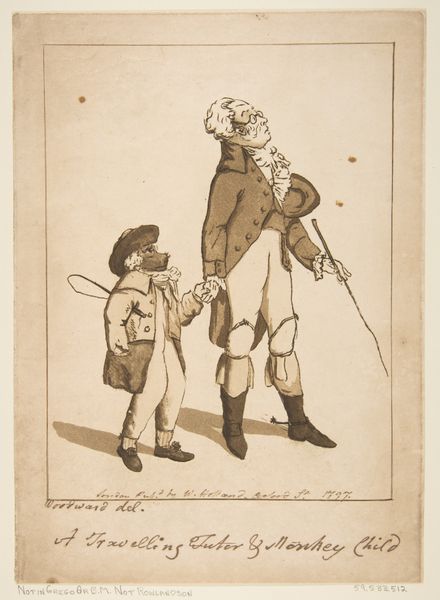
drawing, print, etching, ink
#
portrait
#
drawing
#
blue ink drawing
#
narrative-art
# print
#
etching
#
caricature
#
ink
#
romanticism
#
genre-painting
Dimensions: height 345 mm, width 255 mm
Copyright: Rijks Museum: Open Domain
Curator: Let's turn our attention to this print titled "John Dalton en Gerrit Moll, ca. 1831-32", a piece from the Rijksmuseum’s collection attributed to Pieter Wilhelmus van de Weijer. Editor: Well, my initial reaction is... awkward! The forced handshake, the almost cartoonish depiction, especially of the man on the right... I'm not sure what to make of it. It’s like watching a play where everyone forgot their lines but is desperately trying to act anyway. Curator: It is indeed an intriguing portrayal. This artwork, an etching, is particularly fascinating due to its dedication to the British Association for the Advancement of Science. The context here points to the rise of scientific societies and the public’s fascination with science. Editor: Ah, so we’re looking at celebrity scientists then? Kind of like modern-day influencers, but with beakers instead of bikinis? That hand clasp, I take it, is a performative accord rather than a sincere one, it has the texture of theatre rather than of meeting. Curator: Precisely! These scenes became a means to celebrate and solidify the image of science as a force for progress and to celebrate particular players in the scientific revolution. Think of it as carefully managed PR. The inscription solidifies that narrative, aligning the subjects with the goals of advancement and association. Editor: So the artist isn't really capturing a spontaneous moment. The mood strikes me as somewhat stiff, not entirely genuine. Almost like a satirical observation masked as homage. The level of care is focused more on capturing posture, height, details, and how clothing shapes someone, which doesn’t bring any of their true character into the drawing. Curator: That's a perceptive reading. The slight exaggeration in their features is certainly intended to signal to the audience that there is something playful at work here. These figures represent important historical actors being placed on display in ways that also reveal societal aspirations about scientific leadership and purpose. Editor: Right. The very deliberate composition feels like a stage, doesn’t it? Now, I'm starting to appreciate the layers of commentary here. Curator: Indeed. Considering its position between historical record, satire and promotional item offers an important and early lens on how science has engaged popular culture. Editor: Yes. Thank you, my view has been transformed, taking into account social and historical context really allows the drawing's message to come to life.
Comments
No comments
Be the first to comment and join the conversation on the ultimate creative platform.
